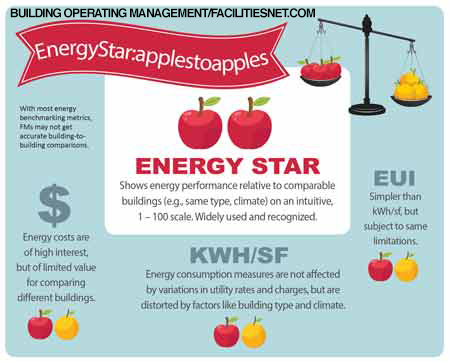How Energy Benchmarking Leads To Real Energy Savings
First of a three-part article on best practices in energy benchmarking as more cities and states make it mandatory.
While energy benchmarking is not a new practice, it is becoming more mainstream as states and cities are starting to mandate annual energy reporting. State and local governments are now leveraging the power of the Energy Star Portfolio Manager database. The Energy Star database enables building owners to see how their annual energy use intensity (EUI) stacks up against comparable buildings — in the same climatic regions. Portfolio Manager has become the de facto standard for benchmarking energy use for owners interested in LEED: Building Operations + Maintenance certification, and it is now the standard for government mandated energy benchmarking and disclosure laws. While still in its infancy, government-required energy-use disclosure is becoming more common.
Despite the obvious usefulness of energy benchmarking, there were challenges before Energy Star. For example, it might seem obvious to compare energy costs as a way of benchmarking. The problem is that energy rates vary widely across the country and even within local geographic areas based on a variety of factors. Therefore comparing energy costs alone for various buildings is problematic. Two identical facilities with different utility rates and located in different climate regions might have their energy cost vary by 100 percent.

What makes utility bill data management even more challenging is the fact that electric and natural gas charges are billed in different energy units depending on the utility company and individual utility rates. While kWh is the common metering and billing unit for electric bills, many rates include charges for electrical peak demand (kW), power factor (kVA), and other factors. The electric bills became much more complicated because of electricity deregulation, which separated electric distribution from the electric commodity.
The same is true for natural gas bills, but the billing process is less complicated. Natural gas is billed based on volume (hundreds of cubic feet or CCF, or thousands of cubic feet or MCF) or volume with heat content adjustment (therms or decatherms). Third-party utility databases are normally converted to one measurement (such as kWh and therms) for reporting.
Related Topics:















